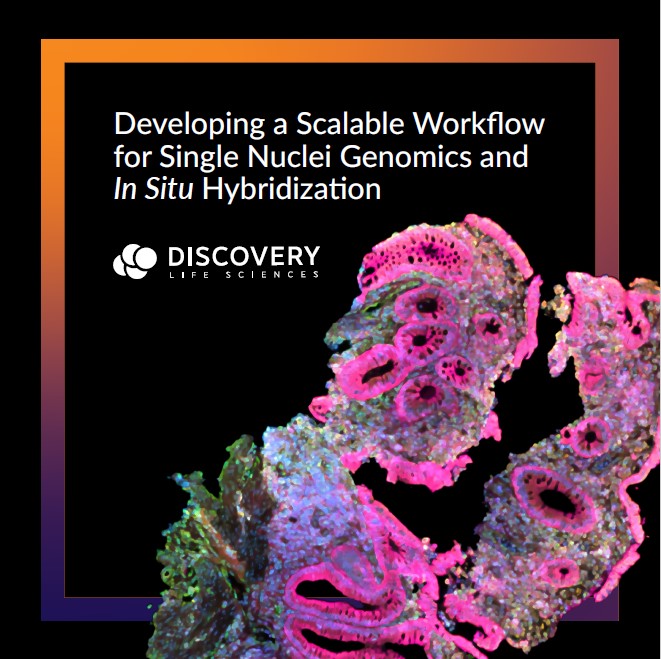
This case study highlights how Discovery Life Sciences utilized advanced single cell and spatial biology technologies and in-depth expertise to uncover the mechanism of action (MoA) of an experimental compound for inflammatory bowel disease (IBD).
To enable this, Discovery developed a customized workflow integrating single cell RNA-seq, single cell ATAC-seq, and spatial gene expression profiling using Xenium in situ hybridization to analyze both prospective and retrospective clinical pinch biopsies from IBD patients. This multi-pronged approach successfully delivered high-resolution cellular and spatial data to demonstrate the safety and immune modulation of the experimental compound. The multi-dimensional data can also support compound differentiation and accelerate therapeutic development.


